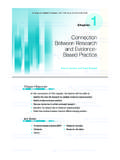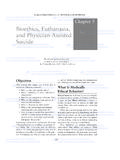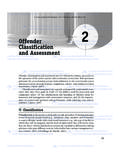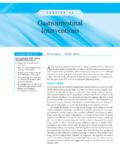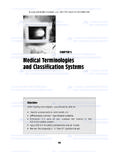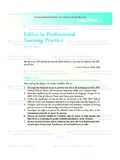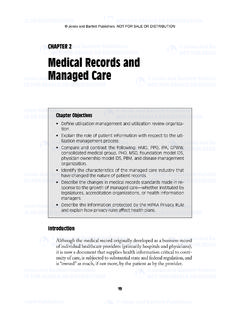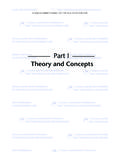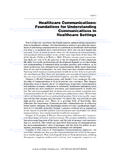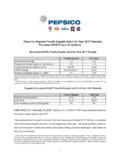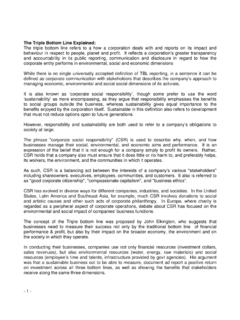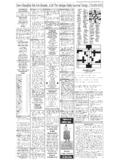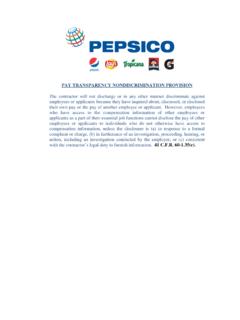Transcription of Ethics in Organizations and Leadership
1 9/25/07 4:21 PM Page 119. Jones and Bartlett Publishers. NOT FOR SALE OR DISTRIBUTION. CHAPTER 4. Ethics in Organizations and Leadership Janie B. Butts Ethics must begin at the top of an organization . It is a Leadership issue and the chief execu- tive must set the example. FORMER CHIEF JUSTICE EDWARD HENNESSEY, MASSACHUSETTS SUPREME JUDICIAL COURT. OBJECTIVES. After reading this chapter, the reader should be able to: 1. Discuss the significance of an open system for health care Organizations . 2. Explore the ethical dimensions that shape the culture of an organization . 3. Compare the similarities and differences between the traditional cultures of an organization and Daft's unique list of cultures. 4. Explore the rationale for the two principles necessary for trust to exist between the community at large and the organization .
2 5. Specify the elements that help to explain the rationale for the critical nature of trust in nurses and Organizations . 6. Delineate the common unethical and illegal behaviors that people sometimes exhibit in Organizations . 7. Briefly explore the history of the adoption of compliance programs and officers in health care Organizations . 8. Identify the reasons for health care fraud occurrences in the year 2006. 9. Examine Pearson et al.'s characteristics of an exemplary ethical organization . 119 . 9/25/07 4:21 PM Page 120. Jones and Bartlett Publishers. NOT FOR SALE OR DISTRIBUTION. 120 C H A P T E R 4 : E T H I C S I N O R G A N I Z AT I O N S A N D L E A D E R S H I P. 10. Discuss prevention strategies for health care fraud and other unethical or illegal behaviors in Organizations .
3 11. After thinking of a person that you have labeled as an ideal leader in your personal life, compare and contrast your ideal leader's characteristics with the characteris- tics of an exemplary leader listed in the book. 12. Analyze your level of morality about a situation involving a possible conflict of interest by taking the 8-item test of rightness or wrongness. KEY TERMS. organization Organizational culture Adaptability culture Mission culture Clan culture Bureaucratic culture Organizational trust Fiduciary relationships Organizational Ethics Compliance programs Corporate fraud Health care fraud Billing for services not rendered Upcoding of services Upcoding of items Duplicate claims Unbundling Excessive services Medically unnecessary services Kickbacks Qui tam lawsuits Conflict of interest Ethical Leadership Ethical communication Ethical quality Ethical collaboration Ethical succession Ethical tenure planning Ethical Organizations An organization is defined as a group, in number from two people to tens of thou- sands, that intentionally strives to accomplish a shared common goal or set of goals.
4 Organizations are systems, meaning that an organization consists of highly integrated parts or groups to accomplish shared goals. An organizational system is composed of inputs (resources monetary and human), processes (how the organization moves to achieve goals), outputs (products or services), and outcomes (end results or benefits to consumers). An open system, such as a health care organization , focuses on external relation- ships, which places the organization in a larger context or environment (Boyle, DuBose, Ellingson, Guinn, & McCurdy, 2001). An open system consists of relations with suppliers, regulatory bodies, customers, allies, and competitors. These external influencers help to guide the internal processes of the organization . An example of an 9/25/07 4:21 PM Page 121.
5 Jones and Bartlett Publishers. NOT FOR SALE OR DISTRIBUTION. E T H I C A L O R G A N I Z AT I O N S 121. external influence is the Joint Commission (JCAHO) accrediting agency. For the accreditation and review process, administrators develop an internal structure and cre- ate roles to assist and coordinate, such as the role of a compliance officer. Because of the open system relationships, ethical issues emerge at a new level. Organizational culture refers to an organization 's beliefs, values, attitudes, ide- ologies, practices, customs, and language. Even when the beliefs of the organization stem from the chief executive officer or the board of trustees, managers and employees need to be loyal and committed to the organization 's goals for a culture to be shaped.
6 Dimensions that shape an organizational culture are highlighted in Box How administrators and other people answer the questions in Box will determine the ethical environment of the organization . Researchers ( , Cartwright & Cooper, 1993; Zammuto & Krakower, 1991; as cited in Boyle et al., 2001) have indicated that four definitive characteristics can make up cultures in Organizations . The traditional view of organizational cultures identified by these researchers is: 1. Power: This culture's descriptors include centralization; individual power and deci- sion making; autocratic, patriarchal power; fear of punishment; and implicit rules. The values are control, stability, and loyalty. 2. Bureaucracy: This culture's descriptors include a hierarchical structure, emphasis on formal procedures and rules, clearly defined role requirements and boundaries of authority, minimized risks, an impersonal and predictable work environment, employees as cogs or slots, and positions more important than people.
7 The values include efficiency, predictability, production, and control. 3. Achievement and innovation: This culture's descriptors include an emphasis on the team, a strong belief in the mission of the organization , organized work of task requirements, worker autonomy and flexibility, decision making pushed to lower ranks, and the promotion of cross-functional knowledge and skills. The values include creativity, adaptability, risk taking, and teamwork. 4. Support: This culture's descriptors include egalitarianism, nurturance of personal growth and development, usually nonprofit Organizations , a safe environment, and a nonpolitical workplace. The values include commitment, consensus, and growth. Several authors or researchers have labeled these four organizational cultures dif- ferently but with similar meanings.
8 Daft (2004) labeled one such set of organizational cultures, and each culture has the potential to be successful. The four cultures identi- fied by Daft are highlighted in Box 9/25/07 4:21 PM Page 122. Jones and Bartlett Publishers. NOT FOR SALE OR DISTRIBUTION. 122 C H A P T E R 4 : E T H I C S I N O R G A N I Z AT I O N S A N D L E A D E R S H I P. BOX : HIGHLIGHTS FROM THE FIELD: DIMENSIONS THAT SHAPE AN. ORGANIZATIONAL CULTURE. As Defined by E. H. Schein Relationship to the environment Is the organization 's relationship to its environment dominant, submissive, or harmonious? The nature of reality and truth What is fact and what is truth? How is truth determined in this organization ? The nature of human nature Is human nature evil, good, or neutral? Do humans have the potential to be perfect?
9 The nature of human activity What is the right thing for humans to do regarding the stated assumptions about reality, the environment, and human nature? Should humans be active, passive, self-developmental, or fatalistic? The nature of human relationships What is the right way for humans to inter- act with each other and to distribute power and resources? Should humans be coopera- tive, individualistic, collaborative, or com- munal? Do humans follow a traditional line of authority or should they be participa- tory? Does the organization value diversity or homogeneity? How is conflict resolved? How are decisions made? Largely quoted and adapted from Schein, E. H. (1991). Organizational culture and lead- ership (2nd ed.), pp. 95 96. San Francisco: Jossey-Bass/John Wiley & Sons.
10 9/25/07 4:21 PM Page 123. Jones and Bartlett Publishers. NOT FOR SALE OR DISTRIBUTION. E T H I C A L O R G A N I Z AT I O N S 123. BOX : HIGHLIGHTS FROM THE FIELD: DAFT'S TYPES OF ORGANIZATIONAL. CULTURES (2004). 1. Adaptability culture: The focus is on the external environment where innova- tion, creativity, risk taking, flexibility, and change are the key elements for success. This type of organization creates change in a proactive way in an effort to anticipate responses and problems. Examples that Daft gave are the e-commerce companies such as and These compa- nies are required to change quickly in anticipation of customer needs. 2. Mission culture: The vision and goals are clearly focused on a high level of com- petitiveness and profit-making strategies.
